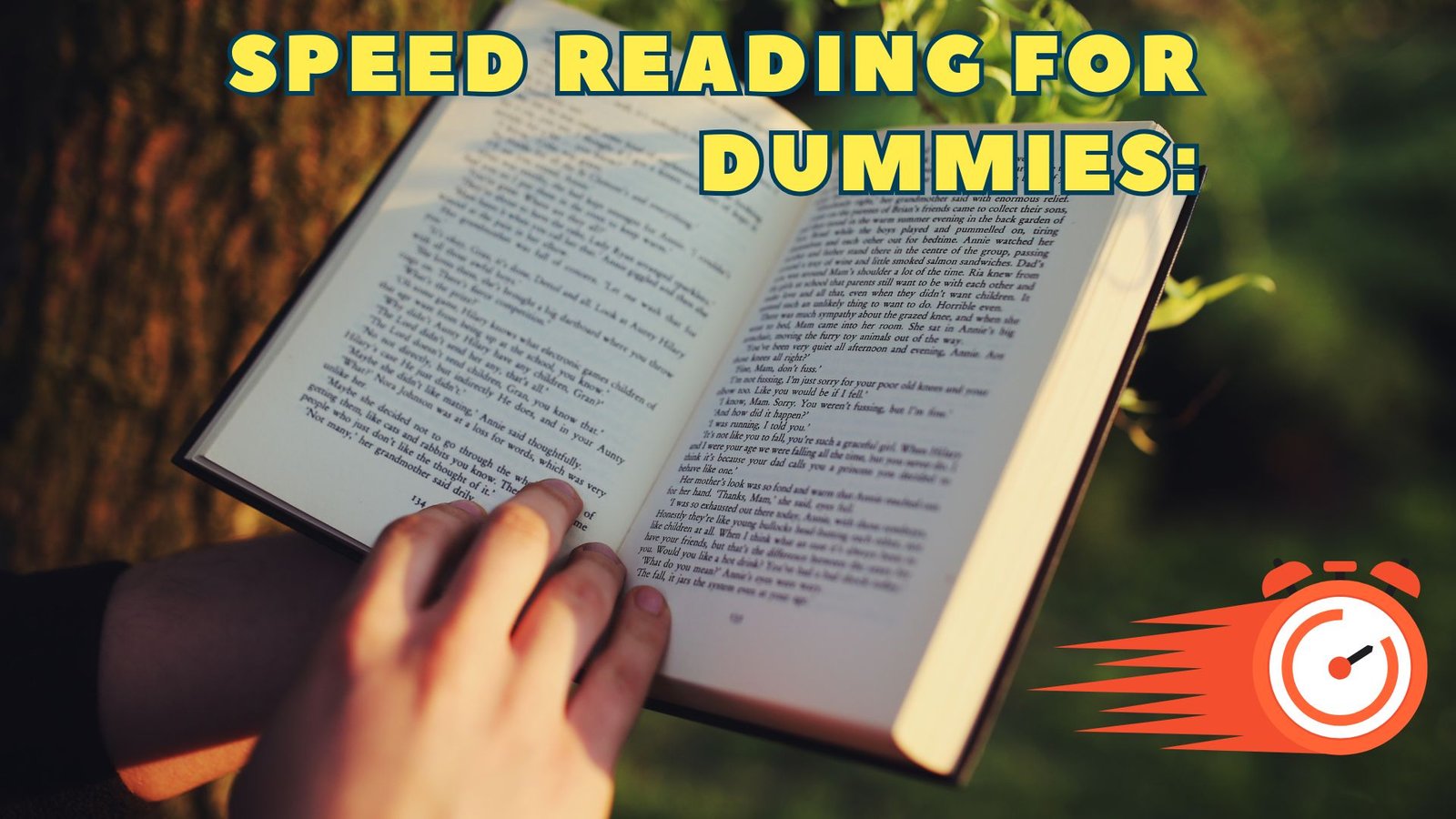Do you ever feel like your reading pile is growing faster than you can keep up? Whether it’s books, reports, or endless emails, reading efficiently is a superpower in today’s information-heavy world.
But here’s the truth: Speed reading isn’t about rushing—it’s about reading smarter.
In this guide, we’ll break down speed reading into simple, actionable steps—perfect for beginners (or “dummies” who want to become reading ninjas).
You’ll learn:
✔ How to double (or triple!) your reading speed without losing comprehension
✔ The biggest myths about speed reading—debunked
✔ Proven techniques used by the world’s fastest readers
✔ How to adapt speed reading for books, emails, and technical material
Let’s move in!
What Is Speed Reading? (And What It’s NOT)
Speed reading isn’t magic—it’s a set of techniques that help you read faster while maintaining (or even improving) comprehension. Here’s what it really means:
- Seeing, not sounding out words – Most people “hear” words in their heads (called subvocalization), which slows them down to speaking speed (~200 words per minute). Speed readers train their brains to process words visually, allowing speeds of 400-700+ WPM.
- Reading in chunks – Instead of one word at a time, speed readers take in groups of words (even whole lines) in a single glance.
- Adjusting speed based on content – Not everything should be read at lightning speed. Skimming works for emails, while dense material may need slower, focused reading.
Myth Buster:
❌ Speed reading means skipping words. False! You still read every word—just in larger groups.
❌ You lose comprehension when reading fast. False! Proper speed reading improves focus and retention because you’re more engaged 8.
How Fast Do You Read Right Now? (Benchmark Test)
Before improving, let’s see where you stand. Here’s the average reading speed scale:
| Reading Speed | Reader Type | Characteristics |
|---|---|---|
| 100-200 WPM | “Talker” | Reads word-by-word, may move lips. |
| 200-300 WPM | Average reader | Some vocalization, reads a few words at a time. |
| 300-700 WPM | Above average | Reads phrases quickly, minimal vocalization. |
| 700+ WPM | Speed reader | Reads 10-16 words per glance, high comprehension. |
Quick Test:
Pick a book, read for 1 minute, then count the words. Divide by 1 to get your WPM.
Or, Test in our tool
4 Speed Reading Techniques Anyone Can Learn
1. Stop Subvocalizing (The #1 Speed Killer)
Most people “say” words in their heads, capping their speed at speaking pace (~200 WPM). To break this habit:
✔ Chew gum or hum softly – Distracts your inner voice.
✔ Use a visual guide (like a pen) – Helps your eyes move faster than your “speaking” brain.
✔ Practice reading “meaning chunks” – Focus on ideas, not individual words.
2. Expand Your Vision (Peripheral Reading)
Instead of reading left-to-right word by word, train your eyes to capture 3-5 words at once. Try:
✔ The “2-3-2” method – Read 2 words at the start of a line, 3 in the middle, 2 at the end.
✔ Vertical reading – Skim down the center of a page, letting peripheral vision catch the rest.
3. Use a Pacer (Your Secret Weapon)
A pacer (finger, pen, or digital highlighter) forces your eyes to move smoothly without backtracking.
✔ Underline as you read – Prevents your eyes from wandering.
✔ Try RSVP apps – Apps like Spreeder flash words rapidly to train faster processing.
4. Skim Like a Pro (When Speed > Depth)
For emails, news, or research:
✔ Read headings & first/last sentences – Captures 60-70% of key info.
✔ Look for keywords – Names, dates, and bold/italicized terms stand out.
When NOT to Speed Read
Speed reading isn’t always the answer. Slow down for:
- Poetry/Literature – Savoring language matters more than speed.
- Complex textbooks – Some material needs deep processing.
- Legal/contractual docs – Missing a word can be costly!
Pro Tip: Adjust speed like a car—slow for curves, fast on straightaways.
Final Challenge: Try This 5-Minute Drill
- Pick a book/article.
- Time yourself reading normally for 1 minute (count WPM).
- Now, use a pacer and read for 1 minute without subvocalizing.
- Compare comprehension & speed.
Most people see a 20-50% boost immediately!
Your Next Steps
✅ Practice daily – Even 10 minutes helps.
✅ Track progress – Use a speed reading app (like Spreeder).
✅ Expand vocabulary – Fewer unknown words = faster reading.
“The more you read, the faster you’ll get—naturally.”
Want More? Check Out These Resources:
📖 Speed Reading For Dummies (Book)
📱 Free WPM tester: myspeedreading
🚀 RSVP apps: Spreeder, SwiftRead
Citations:
[1] Defining Speed Reading
[8] 4 Speed Reading Techniques

